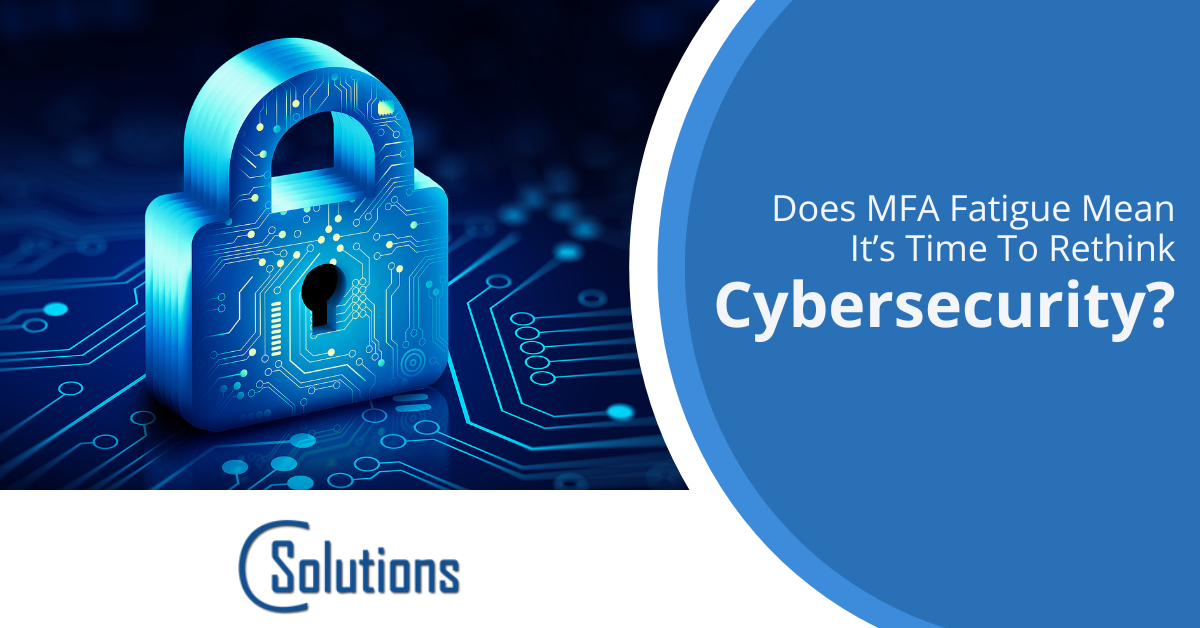Does MFA Fatigue Mean It’s Time To Rethink Cybersecurity?

Multi-Factor Authentication (MFA) has become an increasingly important security measure for organizations and individuals to protect against unauthorized access to systems and data. However, as useful as MFA can be, it is not without its drawbacks – and one of the biggest challenges is MFA fatigue.
MFA fatigue occurs when users are required to frequently authenticate themselves using MFA, which can be time-consuming and inconvenient. This can lead users to become frustrated and start ignoring or bypassing MFA requirements, which can compromise the security of the system or service.
For example, consider a situation in which an employee of a company is required to use MFA every time they access sensitive data or systems. If the employee becomes frustrated with the MFA process and starts ignoring or bypassing the requirement, they may inadvertently expose the company to a security breach.
Worse still, malicious actors have started to take advantage of MFA fatigue in order to trick users into sharing sensitive information, in what’s known as push attacks. This is a type of cyberattack in which an attacker attempts to bypass MFA by sending fake push notifications to the user’s device in order to gain access to the user’s account or system. These attacks can be successful if the attacker is able to trick the user into accepting the fake push notification and entering their login credentials.
In the last 18 months, companies like Uber, Twilio and more have fallen victim to MFA push attacks, so it’s vital to educate yourself and your employees on this risk, as well as put the right protections in place to reduce your likelihood of falling victim.
How To Protect Against MFA Fatigue
With that in mind, here are a few tips to help your company ensure that MFA remains an effective security measure.
- Provide multiple MFA options: By offering users a choice of MFA methods, organizations can help reduce the inconvenience of the MFA process. For example, users may prefer to use a biometric factor like a fingerprint or facial recognition scan rather than entering a code from a security token.
- Use adaptive MFA: Adaptive MFA adjusts the level of authentication required based on the risk level of the activity being performed. For example, users may be required to use MFA for high-risk activities like accessing sensitive data, but may not be required to use MFA for low-risk activities like accessing a company website.
- Educate users: Providing users with education and training on the importance of MFA and the risks associated with ignoring or bypassing the requirement can help increase understanding and reduce MFA fatigue.
- Monitor MFA usage: By monitoring MFA usage, organizations can identify users who may be experiencing MFA fatigue and provide them with additional support or training to help reduce frustration.
- Review MFA policies: Regularly reviewing and updating MFA policies can help ensure that they are effective in protecting against unauthorized access while also being convenient for users.
The Next Security Evolution? Zero Trust
While all of the above steps help to reduce MFA fatigue, the rise of MFA-focused attacks means that organizations must now look to the next frontier. How can they ensure that their MFA strategy isn’t thwarted? What happens if a hacker manages to bypass MFA? And how would a company detect such an attack? The answer lies in zero trust security.
The zero trust model assumes that all users, devices, and systems within an organization’s network are untrustworthy. It treats all access requests as if they are coming from an external threat, meaning users and devices must authenticate and authorize every action they take within the network.
There are several benefits to the zero trust model that cannot be attained with MFA, including:
- It provides a more comprehensive approach to security. Unlike perimeter-based security measures, which only protect the boundaries of the network, zero trust covers all access requests within the network. This makes it more effective at detecting and preventing cyber threats.
- It is more adaptable to the changing nature of cyber threats. As the nature of cyber threats evolves, the zero trust model can be easily adapted to address new threats as they emerge.
- It is less reliant on a single security measure. While Multi-Factor Authentication (MFA) can be an effective security measure, it is not foolproof and can be bypassed by determined attackers. The zero trust model, on the other hand, relies on a combination of security measures to protect against cyber threats.
Ready To Beat MFA Fatigue and Enhance Your Security Posture?
Our experts are on hand to help you design a security strategy fit to defend against even the most complex cybersecurity threats like MFA push attacks. Contact our team for a free initial consultation. We’re ready and waiting to help you improve your security maturity.
